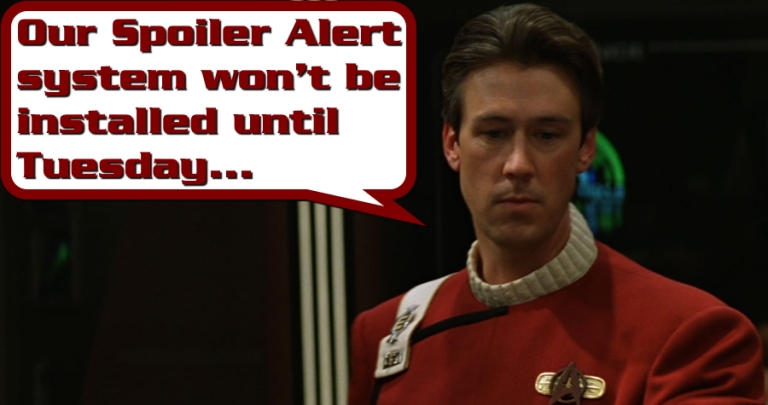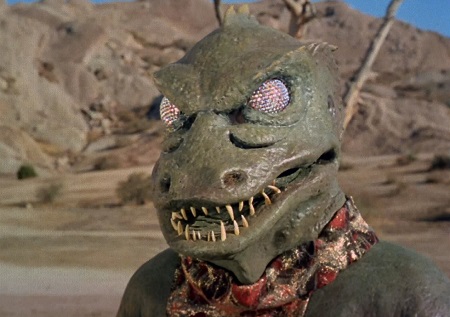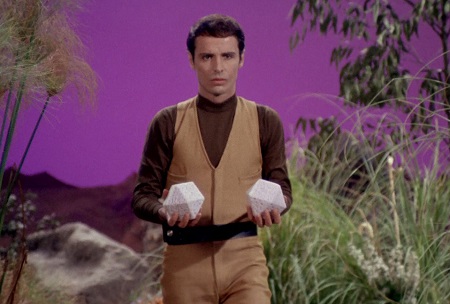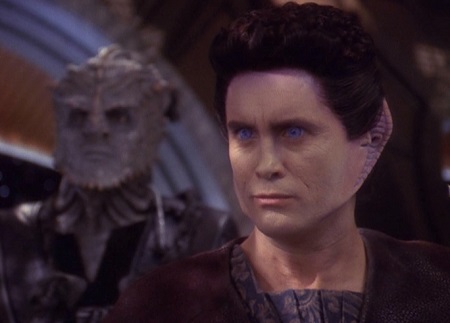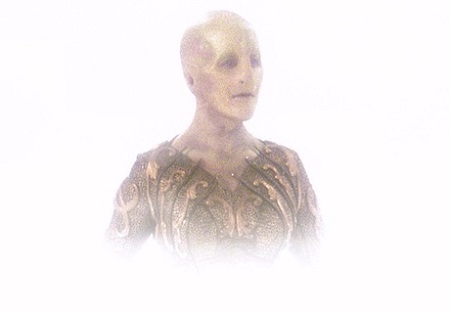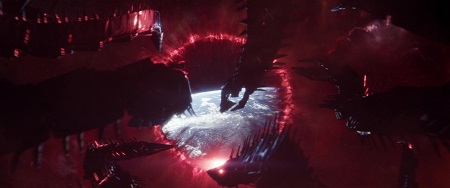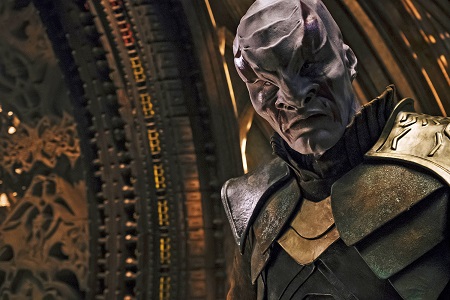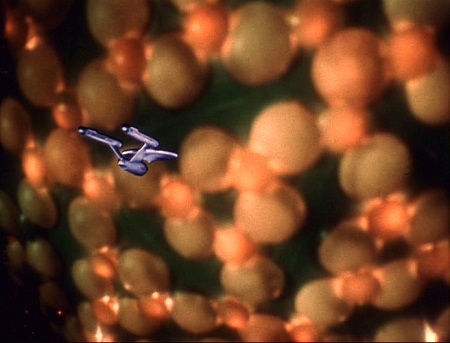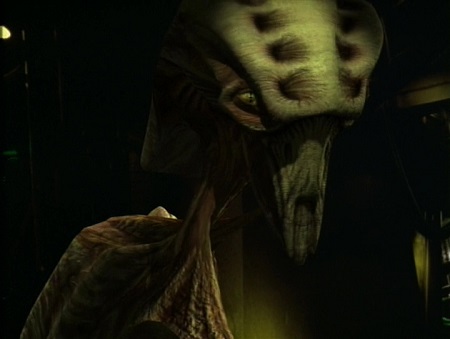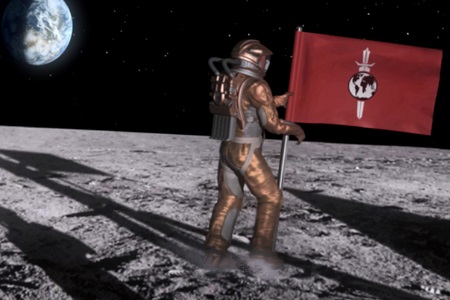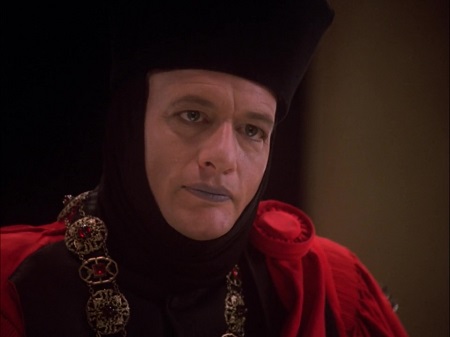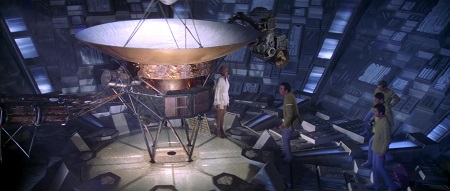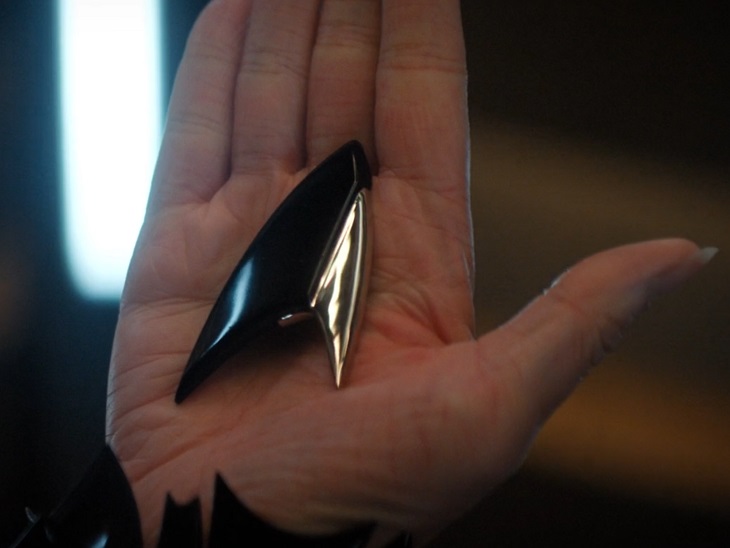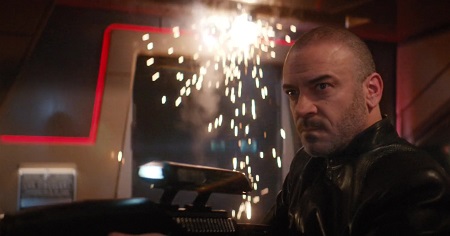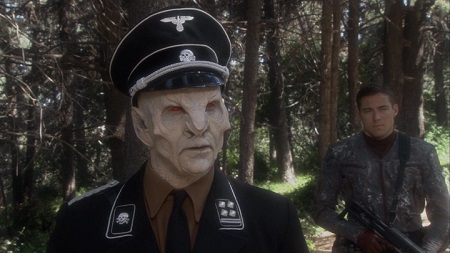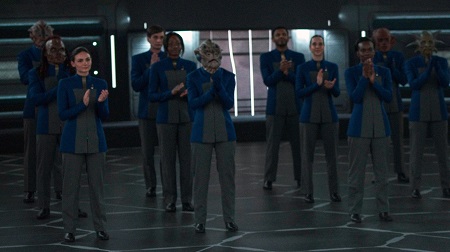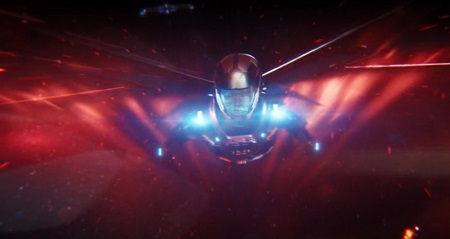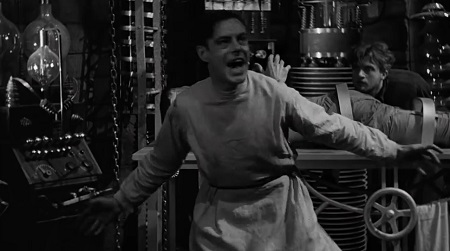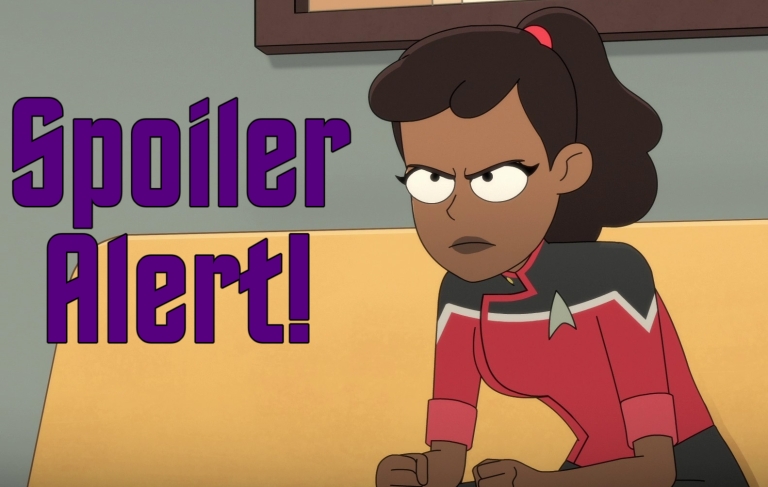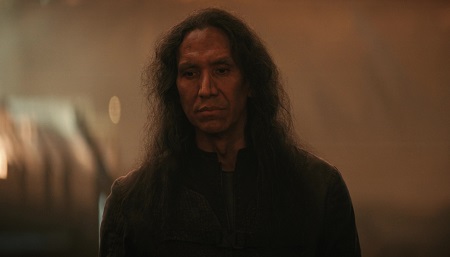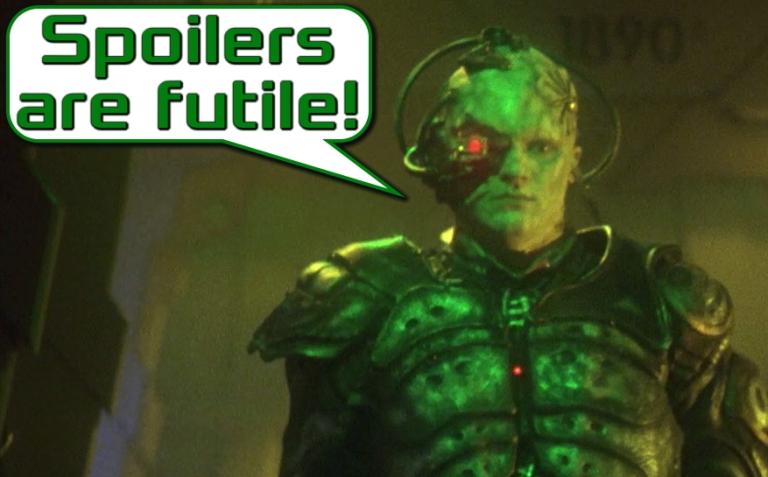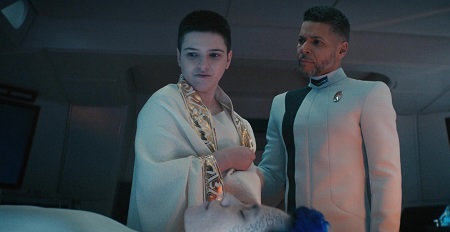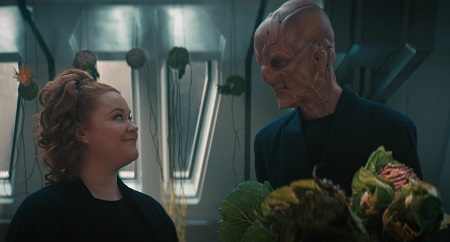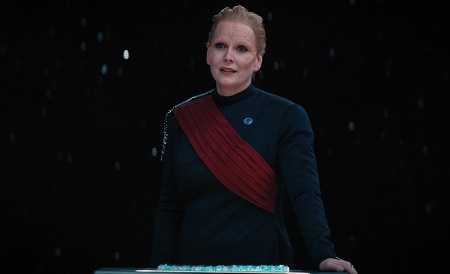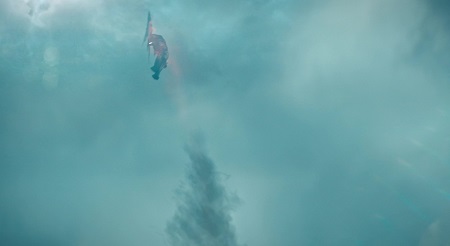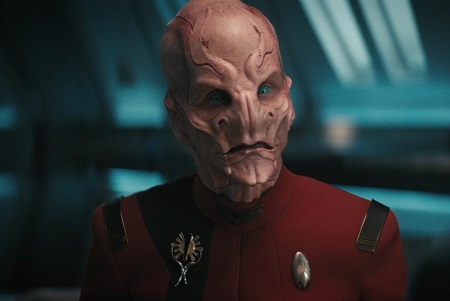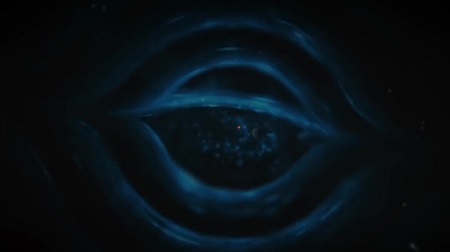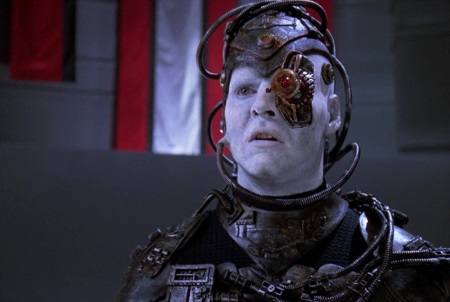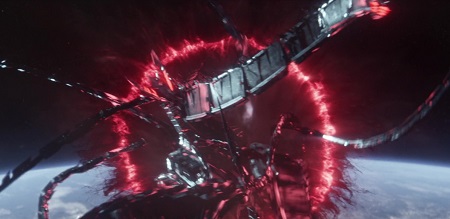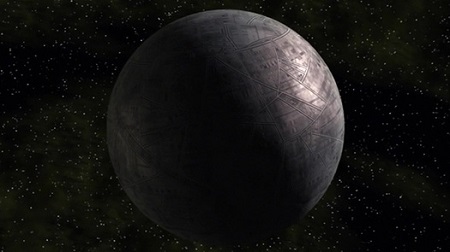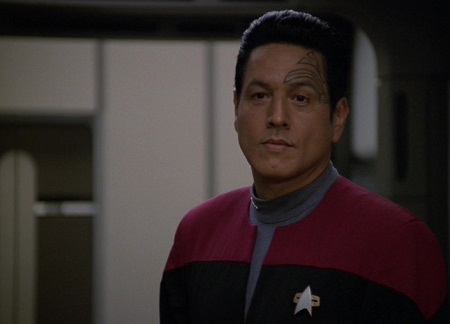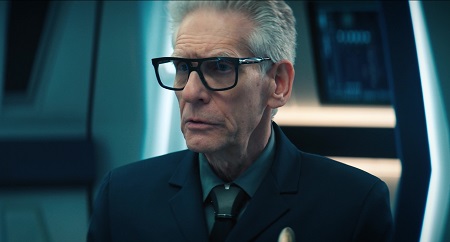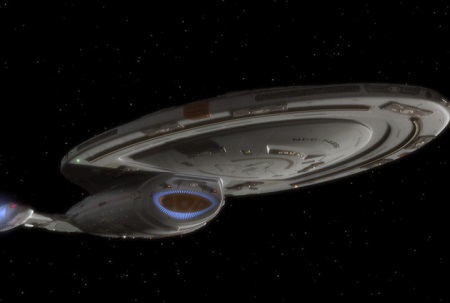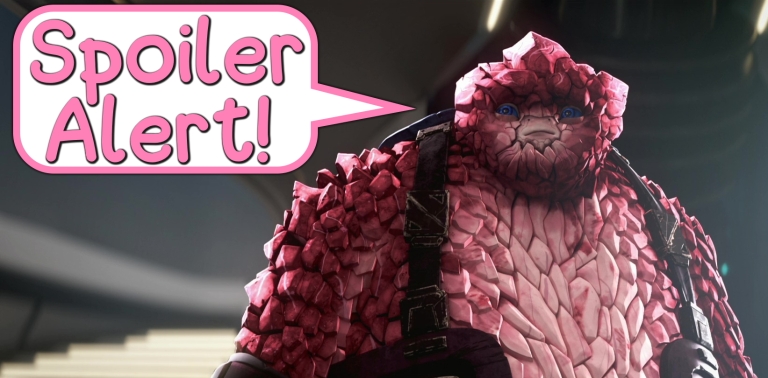
Spoiler Warning: There are spoilers ahead for Star Trek: Discovery Seasons 1-4, Star Trek: Picard Season 1, Short Treks, and for other iterations of the Star Trek franchise.
After a couple of weeks where Discovery took character-focused detours, The Examples brought the story right back to the DMA – the dark matter anomaly that’s wreaking havoc across the galaxy. We learned something incredibly significant this week that will most likely have a huge impact on the season’s main storyline… but is everything as it seems?
The biggest question I have right now is about Unknown Species 10-C. Who could they be? And are they a faction we’ve encountered in a past iteration of Star Trek? My heart wants to say they’re someone familiar; that all of the callbacks and references we’ve had in Season 4 so far are building to some kind of big reveal. But my head says “no” – Unknown Species 10-C will turn out to be someone new and unpredictable.
But enough about that for now! We have several theories that were advanced by The Examples this week, as well as one that was debunked and one that was at least partially confirmed. So let’s take a look at those and then get into the main list!
Debunked theory:
Dr Culber will tell Stamets that he needs to slow down.
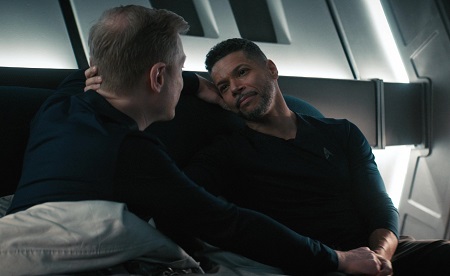
This one surprised me by being a complete inversion of what I was expecting! After Stamets had seemingly gotten lost in his work, overworking himself desperately trying to figure out the DMA, I felt sure that Dr Culber would have something to say. In Choose To Live, Stamets missed out on Gray’s incorporation, and wasn’t there to support Adira. In All Is Possible, he missed out on talking with Tilly before she left the ship.
I felt that Stamets perhaps needed someone – particularly the man he loves – to intervene and warn him about the dangers of overworking and the family moments he’s been missing. Instead it was Stamets who helped Dr Culber: Discovery’s doctor has been throwing himself into his work, too, neglecting his own mental health for the sake of his patients. It was a neat reversal of a storyline I was expecting – and I think we’ll see more in this vein from Stamets and Culber before the end of the season.
Confirmed theory:
The DMA is a super-weapon.
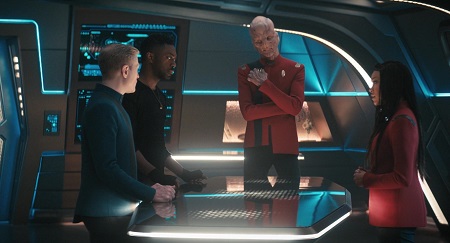
Though it was arguably a conclusion that was arrived at too quickly near the beginning of The Examples, Stamets and Captain Burnham confirmed – thanks to some help from Zora – that the DMA is not a natural phenomenon. Though a natural disaster would have been an interesting story in itself, this always felt like the direction of travel for Discovery, so I wasn’t exactly stunned to learn this!
At present, Captain Burnham and Starfleet are working on the assumption that the DMA is a super-weapon – something I’d been predicting ever since we first heard that some kind of anomaly was going to be a major part of Season 4. Right now, that seems like a logical assumption – and it may very well be true. But as we’ll discuss in a moment, even though the assumption right now is that the DMA is a super-weapon, that may not actually prove to be the case. I can think of several ways in which the DMA could be artificial yet not a weapon! But for now, since Captain Burnham, Admiral Vance, and everyone else on the show are content to assume it’s a super-weapon of some kind, I’m calling this theory confirmed!
So those theories were debunked and confirmed.
Now we’ll get into the main list, beginning with the theories that are either brand-new or which saw significant movement in The Examples.
Theory #1:
The story will connect with the Short Treks episode Calypso.
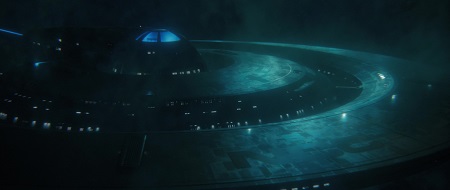
This week we got a few lines from Zora – the USS Discovery’s shipboard AI that we first met in Calypso. Zora was involved in confirming the DMA’s artificial nature, but later in the episode we got something far more significant thanks to a short conversation with Captain Burnham: Zora has begun to experience emotions.
In Calypso, Zora was definitely an emotional life-form, so this evolution in their (her?) personality is a significant step toward Calypso – and one that I hadn’t really considered until after it had happened. Until now, the Zora aboard the USS Discovery had been different from the Zora we’d met in Calypso, but after this week’s episode we’re a big step closer to reconciling the two presentations of the character.
There are still significant hurdles to overcome if the story of Calypso is to be wrapped up in Season 4, though. Obviously we have the timeframe issue: will the USS Discovery be sent back in time, be abandoned, or is Calypso taking place centuries in the future? Then we have the USS Discovery itself – it’s been retrofitted since arriving in the 32nd Century, and now looks very different to how it did in Calypso. Despite all that, however, a connection is one step closer today than it was last week.
Theory #2:
Zora will go rogue.
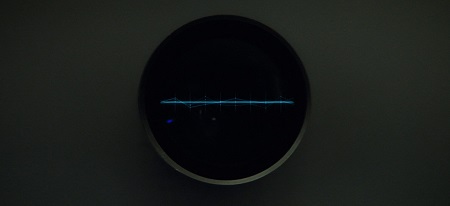
Sticking with Zora, their newfound emotions are a very interesting – and somewhat alarming – addition to the season’s storyline. When Data first installed his emotion chip in Generations, he found the new emotions overwhelming and impossible to cope with at first – could something similar be about to happen to Zora? Will they fail the crew at a key moment? Even worse, might Zora go rogue and become a villain?
The dangerous nature of artificial intelligence has been a theme Star Trek has returned to time and again since The Original Series episode The Ultimate Computer all the way back in 1968. But recent iterations of Star Trek in particular have used narratives involving evil or out-of-control AIs and synthetic life several times: there were the rogue synths and the super-synths in Star Trek: Picard’s first season, and in Discovery’s second season we had the Control AI.
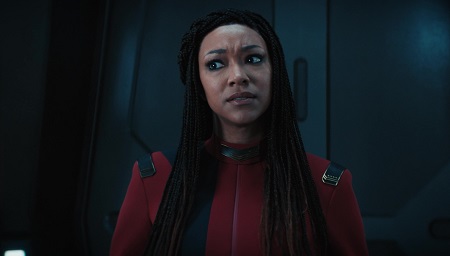
Captain Burnham seemed concerned at Zora’s newfound emotions, but had other things on her mind so didn’t have time to deal with it then and there. What might be even more concerning, though, is the fact that Zora chose to conceal that fact for a time, choosing not to share their most recent evolution.
Perhaps a storyline like this would feel repetitive coming after Season 2 had to deal with Control. But I think it could be made to work, and it could even be made to fit in with Calypso with a bit of creative writing! Whether this theory comes to pass or not, though, I think we’re going to see something significant from Zora before the end of Season 4.
Theory #3:
The DMA isn’t a super-weapon.

Okay, I know! I just said that the DMA is a super-weapon and patted myself on the back for successfully predicting that story beat months ago! But here’s the thing… the DMA being artificial in nature doesn’t mean that it’s a weapon, despite the assumptions made by Captain Burnham, Admiral Vance, and others.
The DMA could be an out-of-control experiment, perhaps something designed to allow faster-than-light travel without the need for dilithium. Stamets and Ruon Tarka suspect that it possesses the technology to create a synthetic wormhole, something that could be very useful for travelling in a dilithium-poor galaxy.
An accident or an experiment gone wrong would set up a very different kind of story to a super-weapon, one that would replace a villainous adversary with a puzzle of a scientific nature. That could be a fun and interesting way for the season to go – not to mention that it would be subversive and challenging to the audience’s expectations.
Theory #4:
The DMA is a life-form.
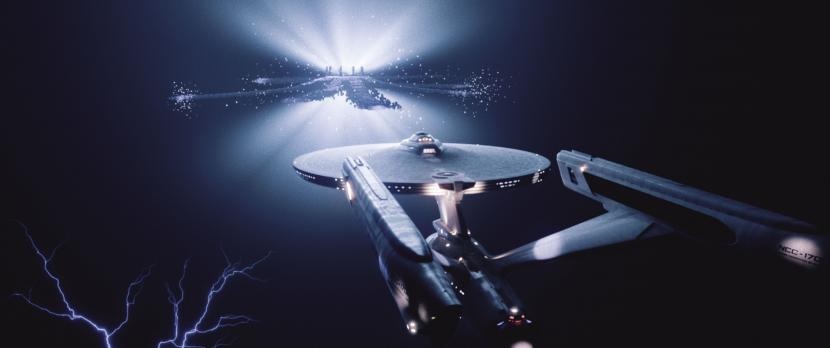
The DMA could also turn out to be a life-form in its own right, perhaps a synthetic one or something akin to The Motion Picture’s V’Ger. If that were the case it may not be attacking anyone, but simply exploring or trying to make contact. After all, “they were only trying to communicate” has become a Star Trek trope at this point!
Star Trek has shown us many different forms of synthetic life over the years, and while the DMA would certainly be one of the most unusual, it wouldn’t be entirely without precedent. Seeking out new life is at the very core of Starfleet’s mission, and finding a way to communicate with the DMA and figure out what it wants or needs could be a very interesting story – one about understanding and bridging the chasm between different cultures and societies that Star Trek has always done so well.
Theory #5:
Unknown Species 10-C is a faction from a past iteration of Star Trek.
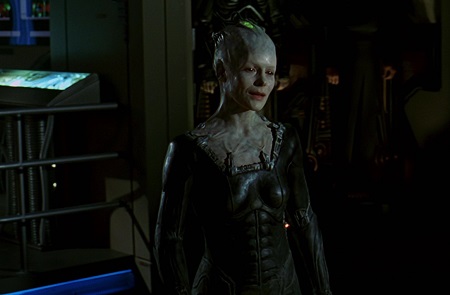
Regardless of the intention behind the DMA, it does indeed appear to be an artificial construct. Whoever created it had a reason for doing so, even if that reason isn’t clear right now! But who could be responsible?
I recently put together a list of suspects, and I strongly encourage you to check out the full list by clicking or tapping here.
If you don’t have time for that, here’s the condensed version: the Borg, the Sphere-Builders from Enterprise, the super-synths from Picard Season 1, the Kelvan Empire, Section 31, and Species 8472 are just some of the possible culprits. For a more detailed version, check out the full list linked above.
Theory #6:
President Rillak knows what the DMA is and may be responsible for its creation.

We didn’t see President Rillak this week, though she was briefly mentioned by Admiral Vance. But when I think about the possible suspects for creating the DMA, the Federation – and by extension, President Rillak – are unquestionably on that list.
President Rillak is a cunning, almost Machiavellian politician, willing to do anything to advance what she considers to be the best interests of the Federation. I believe Captain Burnham needs to be very careful with President Rillak. During the events of All Is Possible, working with Captain Burnham was advantageous to the Federation’s president – but I have no doubt that she’d throw Burnham and the USS Discovery under the bus without so much as blinking if she believed it would be to her advantage. Which brings us to the DMA.
President Rillak might know more about the DMA than she’s currently letting on. If the Federation had created a weapon like this, or if it was an experiment gone wrong, covering it up might be her objective even if she wasn’t necessarily the one who ordered the DMA’s creation. Also, with the goal of reuniting the Federation foremost in her mind, President Rillak may prove to be the sort of uncompromising politician who’d willingly unleash destruction upon the galaxy if she believed that doing so would serve a greater purpose.
Theory #7:
Dr Kovich is an agent (or the head) of Section 31.

I freely admit that this theory is barely clinging on right now, but I don’t believe it’s been completely disproven just yet! The questions of who Dr Kovich is and what exactly his role is within Starfleet and/or the Federation have no clear answer right now. He’s clearly someone with power and influence, as we’ve seen him working with Admiral Vance and seemingly being able to appoint anyone he chooses to be an instructor at Starfleet Academy. Yet he also seems to have some medical training, serving as a psychologist or counsellor – and it’s in this capacity that we saw him this week.
Because of the unclear nature of his role and the mysterious, stoic presentation from David Cronenberg, Dr Kovich is still an enigma. He’s also the kind of man who could potentially be an agent of Section 31. If it turns out that the Federation, President Rillak, and/or Section 31 are involved with the DMA, perhaps we’ll learn that Dr Kovich is as well. Or perhaps such a storyline will finally put this theory to bed once and for all!
Theory #8:
Captain Burnham and/or the Red Angel suits from Season 2 are connected to the DMA.
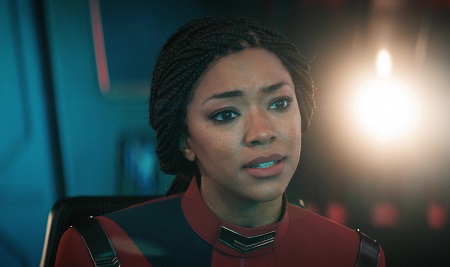
Now that we know the DMA is artificial in nature, the question shifts to who built it and why. We’ve covered the idea of it being a weapon or an out-of-control experiment, as well as being a life-form in its own right. It could also be the responsibility of Section 31 or the Federation. But because this is Star Trek: Discovery, a show which likes to put Captain Burnham at the centre of its stories, perhaps there’s a connection to her that we’re missing.
The Red Angel time travel suits from Season 2 were phenomenally powerful machines, capable of generating time-wormholes large enough to transport an entire starship 930 years into the future. We already know that the DMA potentially contains a synthetic wormhole, so it wouldn’t be a huge leap to connect the two. We also don’t know for certain what became of Captain Burnham’s Red Angel suit after the Season 3 premiere. There’s also the faint possibility of a parallel universe Burnham or time travelling Burnham being responsible.
Theory #9:
Stamets and Ruon Tarka will create the DMA.
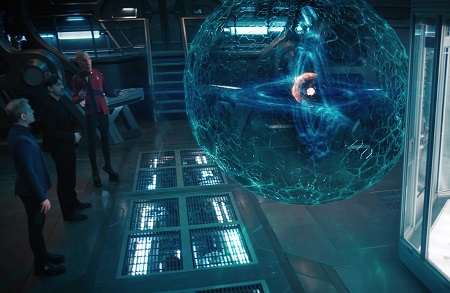
I included Stamets and Tarka on my list of suspects a couple of days ago, but they warrant a full entry on the theory list too! In short, we saw Stamets and Ruon Tarka creating a scale model of the DMA in The Examples, and according to Reno their experiment came very close to destroying the entire ship. They were able to perfectly recreate the device at the centre of the DMA, albeit on a smaller scale – so what’s to prevent them from building a full-scale replica?
This theory suggests that they will – somehow – and that doing so will set into motion a chain of events that leads to the creation of the DMA in a kind of time-loop storyline. The DMA’s wormhole-generating technology may give it the ability to travel backwards through time as well as across vast distances, so it seems technologically plausible at the very least.

Ruon Tarka was shown as impatient in The Examples, and in his single-minded pursuit of the DMA he may be willing to take risks – perhaps risks which ultimately lead to the creation of the very anomaly he’s been investigating. How such a story would conclude is up in the air, but I don’t think we can rule it out as a possibility right now.
Personally, I find time-loop paradox storylines to be frustrating – and they can be very difficult to pull off successfully. There’s no beginning point to such a story: the DMA exists because the DMA was created because the DMA exists because the DMA was created… it’s an infinite loop. But we’ve seen Discovery tackle time travel stories like this before – and the pieces seem to be in play right now for this story.
So those theories are new or saw movement this week.
As always, I like to keep all of my theories in one place. So up next we’ll recap all of the other Season 4 theories that are currently in play. I find it helpful to keep the full list going like this – it makes it easier to keep track of all of the theories as they get confirmed or debunked.
Theory #10:
We haven’t seen the last of the Abronians.
I currently have four ideas for different ways that the Abronians – the non-humanoid race that Captain Burnham, Tilly, and the Qowat Milat helped save from cryo-sleep in the episode Choose To Live – could play a further role in Season 4.
Theory #10a:
The Abronians’ homeworld was destroyed by the DMA.
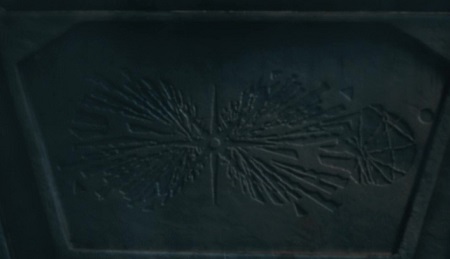
After arriving at the Abronians’ cryo-ship, Captain Burnham found a stone carving that seemed to depict the destruction of the Abronians’ homeworld. This carving was only shown on screen briefly, but it seemed to show the planet being damaged or destroyed in a large explosion. Burnham credited the planet’s destruction to a “supernova,” and the story then raced ahead.
Considering that the main thrust of the season so far has been about the DMA, perhaps Burnham was incorrect: the Abronian homeworld was destroyed by the anomaly, not a supernova.
Theory #10b:
The Abronians’ homeworld was on the “other side” of the DMA.

One clip in the second Season 4 trailer appeared to show Captain Burnham leading the USS Discovery inside the DMA. We don’t yet know what that means, nor to what extent words like “inside” the anomaly or “the other side” of the anomaly are even coherent concepts. But many times in past iterations of Star Trek we’ve seen things like wormholes and gateways to parallel universes. Perhaps the anomaly is something similar – and passing through it leads to a different dimension, parallel reality, or just a faraway region of space.
One thing struck me as odd about the Abronians: the Federation was entirely unaware of them, despite the Abronian cryo-ship being relatively close to Federation space – such that Captain Burnham could reach it using Book’s ship in a short span of time. It’s possible that the Abronians had been asleep for millennia, unnoticed by the Federation and the wider galaxy for all that time. But it’s also at least possible that their cryo-ship is a newcomer to the area. If so, perhaps it arrived here via the DMA.
Theory #10c:
The Abronians will return to help the Federation later in the season.
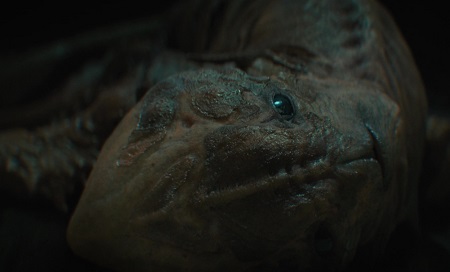
One of the themes of Discovery since Season 3 has been connection, including building connections between the Federation and other races and organisations. The Abronians were awoken from cryo-sleep thanks to the interventions of Captain Burnham and Tilly – at least in part – and they may seek to repay the Federation, or Captain Burnham personally, for that help.
We saw this play out last season with Ni’Var; in the season finale Ni’Var ships raced to the Federation’s aid as the Emerald Chain attacked. Perhaps the Abronians will likewise step up to help when the Federation needs allies.
Theory #10d:
The Abronians’ moon-ship may be useful in a later story.

At this stage I can’t envision precisely what use Captain Burnham and the crew might have for a moon-sized starship… but that doesn’t mean such a need won’t arise! The Abronians’ cryo-ship is huge, and at least superficially seems to have the mass of a moon or small planetoid. If Captain Burnham and the crew needed something that large for some purpose, perhaps they’ll return and either take it or negotiate for it.
As we saw in Choose To Live, the moon-ship was in full working order. All it needed was some extra dilithium to power up and it was perfectly capable of moving under its own power, and its computer systems were still functional. The only system that seemed to have failed was the wake-up timer! So if – for reasons yet unknown – the crew need a huge starship, perhaps we won’t have seen the last of the moon-ship.
Theory #11:
Book will find Kyheem and Leto inside the DMA.
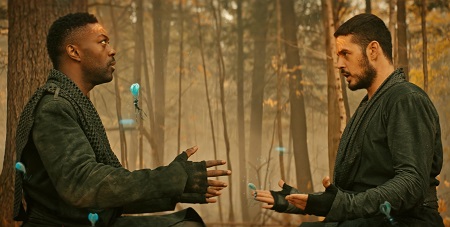
In Star Trek: Generations, Captain Picard encountered Captain Kirk inside the Nexus – despite Kirk being declared “dead” after the Enterprise-B encountered the energy ribbon almost eighty years earlier. We don’t know what the DMA is yet; one of my very early pre-season theories involved the Nexus, but that seems to be debunked already! However, the anomaly’s mysterious nature raises the faint possibility that at least some of those it appears to have “killed” may not be as dead as they first appear.
This theory is, I freely admit, a bit of a long-shot. And it hinges on a fundamental question underlying the story of the season: is there more to the DMA than meets the eye? If the anomaly is just an extreme example of space weather, flitting through Federation space destroying anything unfortunate enough to be in its way, then probably everyone on Kwejian is dead. But if the anomaly harbours some kind of gateway, wormhole, portal, time vortex, or any of the other Star Trek-y technobabble phenomena that we’ve seen across the franchise’s history, then it’s possible that at least some of the folks on Kwejian found themselves transported to whatever realm lies inside of the anomaly.
Theory #12:
Saru will be given the captaincy of the USS Voyager-J.
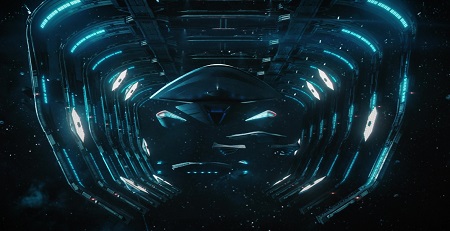
Saru’s future was briefly discussed before he offered to serve as Captain Burnham’s first officer in the episode Anomaly. He has already been offered a command of his own, so Starfleet clearly values his command abilities and experience. President Rillak was seen to be assessing Captain Burnham’s suitability for the captaincy of the USS Voyager-J in Kobayashi Maru… and she mentioned having a shortlist of candidates. Could Saru be on her list?
Several of the qualities that President Rillak said she was looking for in a potential captain seem to apply to Saru. He’s more level-headed, less likely to put himself in a dangerous situation, and more inclined to think of the big picture. He has a weakness when it comes to Kaminar, as we saw toward the end of Season 3, but generally speaking he isn’t someone who lets his emotions get the better of him. His wisdom and calm demeanour could be valuable in the captain’s chair of the Federation flagship. This could also set the stage for his departure from the show, or possibly even for a new show following his adventures aboard his new ship.
Theory #13:
A major character will be killed.
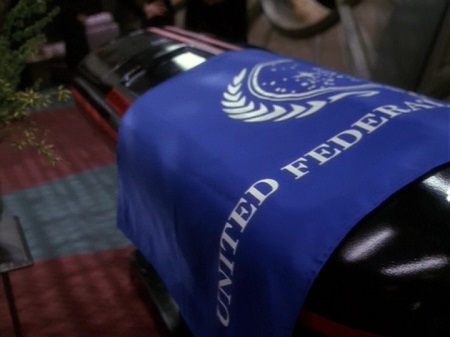
Season 3 saw a couple of major departures: Mirror Georgiou entered the Guardian of Forever’s portal, and Nhan remained behind aboard the USS Tikhov. Yet despite the dangers the crew faced as they navigated the 32nd Century, battled the Emerald Chain, and figured out the mysteries of the Burn and the Verubin Nebula, only one ally – Ryn – lost their life.
Killing off a character can be an excellent way to communicate the stakes involved if it happens at a relatively early stage. It can also be a storyline that brings a lot of emotion, as we have to say goodbye to a beloved member of the crew.
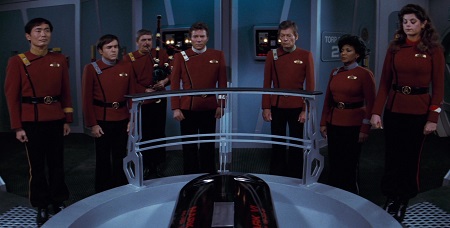
In short, I think there are plenty of reasons on the production side why killing off a major character could make sense in Season 4. Though we’ve already had one departure this season – that of Lieutenant Tilly – I still believe that Discovery could very easily go down this road, especially considering how dangerous the DMA currently is.
For a breakdown of which characters I thought might be in danger before the season premiered, check out my list of “death predictions” by clicking or tapping here.
Theory #14:
There will be a character crossover from a past iteration of Star Trek.
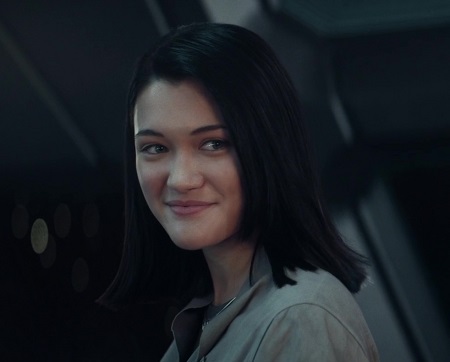
This theory returns from Season 3, where I doggedly clung to it for the entire season!
Discovery’s 32nd Century setting has shot Captain Burnham and the crew far beyond anything in Star Trek’s established canon, and that should mean that practically everyone we remember from other Star Trek shows won’t be around any longer. But this is Star Trek – with some creatively-written technobabble, practically any major character could have survived all the way through to the 32nd Century!
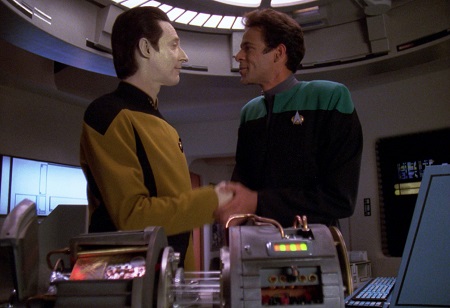
It’s also possible for Captain Burnham to discover the logs of a long-dead officer; someone we as the audience would be familiar with. While this would be less of a “crossover” than if a character from the past could be physically present, it would still be a lot of fun to see!
There are a handful of characters who could have survived to the 32nd Century based on what we know about them from past iterations of the franchise. Included in this category would be people like Soji, Voyager’s Doctor, and a few others. But as we’ve seen in episodes like Relics and even the film Generations, all it would take to make a big crossover happen is some kind of temporal anomaly, stasis field, or other technobabble!
Theory #15:
Michael Burnham won’t remain captain of Discovery.
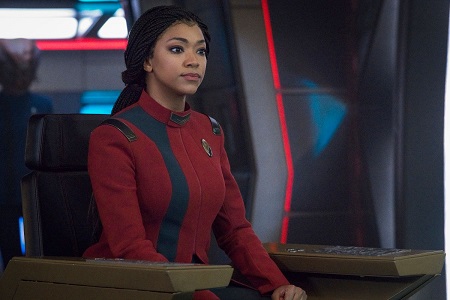
This is a controversial one, so let me just say up front that I’m neither in favour of this theory nor opposed to it – I just think it’s a possibility. As things stand, Discovery has had four different captains across its four seasons. One of the show’s unique points of interest within Star Trek’s broader canon are the very different ways in which these individual captains commanded the ship and crew.
It’s got to be considered at least a possibility, then, that the show will continue this trend. This doesn’t mean Captain Burnham will be killed off; I’d actually argue she’s pretty safe. But there are many different routes to her potentially leaving the ship, such as a desire for freedom that we saw in Season 3, or even perhaps taking up a new, more senior role within Starfleet.
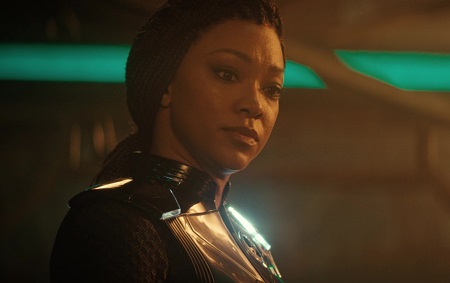
If this theory were to come to pass, it would be something I’d expect to see at the very end of the season. Even if Burnham seems 100% committed to her new role as captain, I don’t think it’s a theory we can definitively rule out.
It’s worth mentioning that at time of writing Discovery hasn’t been officially renewed for a fifth season – so all this talk of who’ll be in the captain’s chair by then could be moot! And of course this theory has a very strong counter-argument: that Discovery’s main story arc across its first three seasons can be read as Burnham’s ascent to the captain’s chair.
Theory #16:
The ban on time travel will be explained in more detail.

This one is a hope as much as a theory right now! In short, the ban on time travel was introduced early in Season 3 primarily as a way for the writers and producers to avoid questions about why the 32nd Century was so different from how the far future had been depicted in earlier Star Trek productions, as well as to explain things like how the Burn was able to catch the Federation off-guard and why Georgiou couldn’t simply be sent back in time when she needed to.
But the ban itself raises some issues – the biggest one being the lack of detail on how it works and how something like this could possibly be enforced. As I said several times last season, it isn’t possible to just un-invent a technology so useful and powerful as time travel. Even just a few lines of dialogue going into a little more detail on the mechanisms involved in the ban would be really useful.
Theory #17:
The Federation has flouted the ban on time travel.
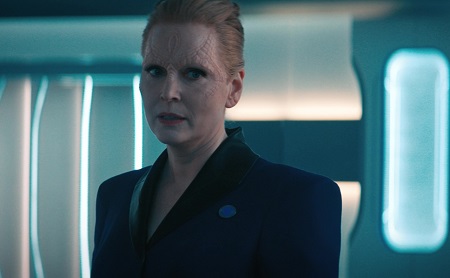
Sticking with the time travel ban, another theory I had last season was that the Federation – and Section 31 in particular – might have deliberately flouted the ban and failed to abide by the rules. Someone as straight-laced and committed to Starfleet ideals as Admiral Vance is highly unlikely to have sanctioned such a move, but someone like the shadowy Kovich might have. President Rillak could also be involved.
Obviously the bulk of the season’s story will deal with the DMA. But there’s scope to either talk about the time travel ban in a standalone episode or even tie the two stories together – perhaps the anomaly has been unleashed as a result of unsanctioned time travel.
Theory #18:
The crew will have to defend the Verubin Nebula.
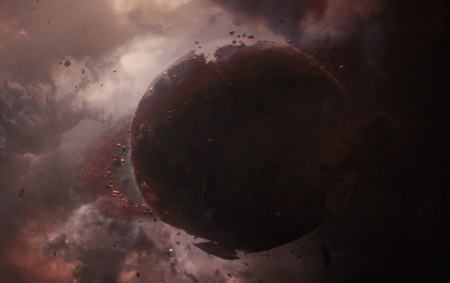
The Federation is still in a weakened state, nowhere near as powerful as it once was. The Verubin Nebula is thus a very tempting target for anyone looking to gain an edge in a galaxy where dilithium is still in short supply. As the only known significant dilithium supply, whoever controls the Verubin Nebula will have a massive tactical advantage.
We can compare the Verubin Nebula to Deep Space Nine’s Bajoran wormhole in that respect – it’s a resource of huge strategic importance. Season 3 didn’t show us much about the makeup of the galaxy’s factions outside of the rump Federation and the Emerald Chain, but it’s got to be possible that factions like the Dominion, Klingon Empire, or even the Borg still exist and would want to seize the Verubin Nebula for themselves.
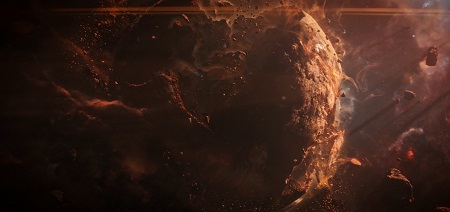
Season 4 has presented Captain Burnham and the crew with a scientific puzzle: the DMA. But that doesn’t mean there won’t be villains in play, and Discovery has introduced us to several compelling and interesting villains over its first three seasons.
To make a long theory short, it would begin to stretch credulity to think that everyone in the known galaxy would see the Federation rebuilding and having access to dilithium and not want to find out for themselves what’s going on. Once the Verubin Nebula’s existence becomes known, even if the Federation promises to share its bounty with all comers, it seems very likely that someone would want to take control of the dilithium supply for themselves.
Theory #19:
Captain Burnham and the crew will encounter the Klingons.

By the late 24th Century the Federation and Klingons were firm friends, having been allied for a century and after fighting side-by-side against the Dominion. We don’t know if that alliance endured to the 32nd Century, but it’s certainly plausible to think that it did. The Klingons might even have joined the Federation at some point, and their violent warrior culture may have been significantly pacified.
One thing that could be very interesting to see is how the crew of the USS Discovery – almost all of whom are veterans of the Federation-Klingon war – would respond to that. They’ve worked alongside Klingons like L’Rell before, but many of them still see the Klingons as an old enemy. The story of overcoming that prejudice could mirror episodes like The Wounded from The Next Generation, and would be very interesting to see.
Theory #20:
Some areas of the galaxy – such as the Delta Quadrant – avoided the worst effects of the Burn.
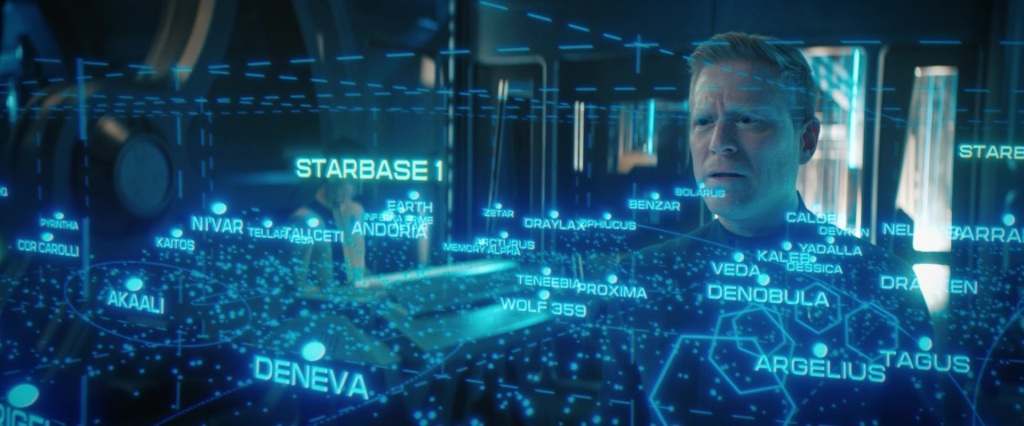
Season 4 touched briefly on the Burn with Su’Kal and Saru in Kobayashi Maru, and may now seek to put last season’s story to bed so it can wrangle with the DMA instead. But one thing I’d be curious to see is the true extent of the disaster – did it reach all four quadrants of the galaxy equally, or did its effects fade out after a certain point? Michael Burnham discovered that the Burn had a point of origin, and that it radiated out from that point like ripples on the surface of water. Ripples eventually diminish, fading away the further they travel, and perhaps that’s true of the Burn as well. There could be whole areas of the galaxy that didn’t even notice the Burn – and maybe the ship and crew will visit one such region.
If the Delta Quadrant was left largely unscathed, for example, what might that mean for the likes of the Borg? It’s possible they aren’t even still around in the 32nd Century, but it’s also possible that they’ve had more than a century to expand and build up their forces while the Federation suffered. To see a full write-up of this theory, click or tap here.
Theory #21:
The Guardian of Forever will be back.
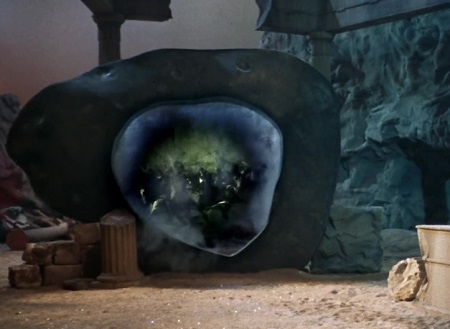
Having reintroduced the Guardian of Forever in Season 3, I wouldn’t be at all surprised to see Discovery return to the Guardian’s planet in Season 4. The DMA is something new and threatening, so it’s possible Captain Burnham might want to ask the Guardian for help or information.
The Guardian of Forever is also the only way we know of at present to travel through time – something that might be necessary if Season 4 makes an attempt to link up with Calypso in a big way. There are many reasons why Captain Burnham might want to revisit the Guardian, and it would be great to bring back actor Paul Guilfoyle, who played the Guardian’s humanoid avatar in Season 3.
So that’s the main theory list.
We also have two production-side theories in play, and I’ll recap those now.
Production-side theory #1:
Tilly’s departure will be permanent.
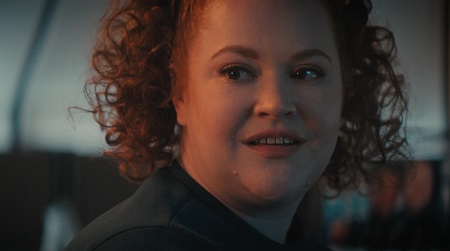
Mary Wiseman confirmed in an interview with Wil Wheaton on The Ready Room (Discovery’s social media aftershow) that Tilly will be seen again before the end of Season 4. But that doesn’t mean she will be a main character on the show going forward, and her departure feels permanent. Despite that, I’ve seen quite a lot of folks online who don’t believe that Tilly is actually leaving the series – so I wanted to put it out there officially and say that, in my opinion anyway, she is.
Maybe those people know something that I don’t! As I always say, I don’t have any “insider information;” all of this is just speculation on my part. However, I feel that the manner of Tilly’s departure, the fact that she got that emotional sequence with Captain Burnham, a montage showing her leaving the ship, Adira seeming to take over several of her roles, and her departure feeling like the culmination of her arc going back to the latter part of Season 3 all come together to strongly indicate that she won’t be back as a major character. She may yet have a significant role to play in a future Season 4 episode, as has been suggested, but unless Discovery’s writers are really playing with our emotions I believe we’ve seen Tilly’s end as a main character on the show. She may come back in a future Starfleet Academy series, though… so watch this space!
Production-side theory #2:
Star Trek: Discovery isn’t going to be renewed for Season 5.
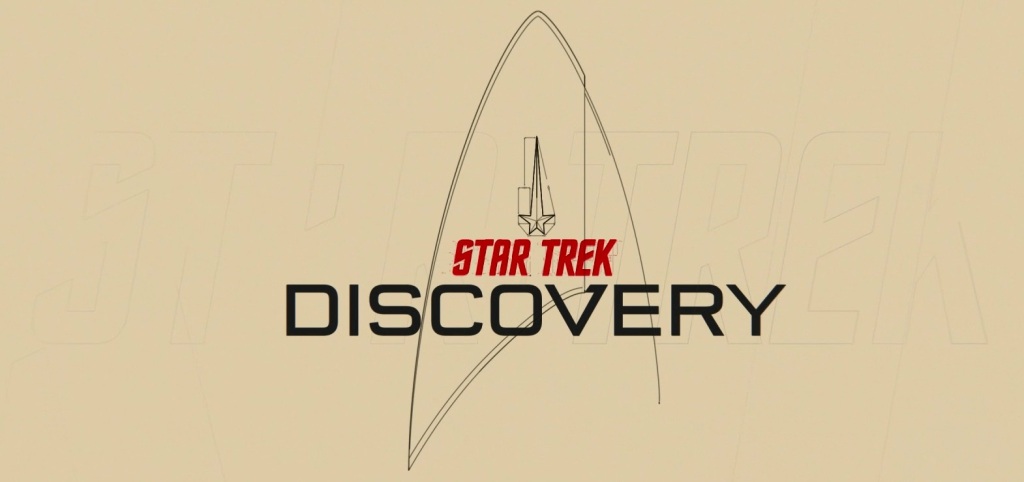
Since Discovery debuted in 2017, we’ve known by this point in the season that the show has been renewed. This isn’t one of those “I hate new Star Trek” things that we’ve seen doing the rounds online for years; I adore Discovery and genuinely want to see it continue. But it’s profoundly odd to be nearing the halfway point of Season 4 and to still have had no announcement about Season 5. For comparison, Star Trek: Picard has been renewed for Season 3 even though Season 2 won’t air until next year!
I’m hopeful that this is just a blip; a temporary delay for reasons unknown, and that the show has been renewed for Season 5 already behind-the-scenes. However, when we look back at Star Trek productions in recent years, it was often apparent that production work was quietly ongoing even if there hadn’t been any official word from ViacomCBS. As far as we know at this stage, there’s been no pre-production work on Season 5, let alone any filming taking place in the Toronto area.
Once again this is a “watch this space” kind of theory. I hope I’m wrong… but the lack of any news or even any significant rumours about the show’s future is beginning to have me worried.
So that’s it.
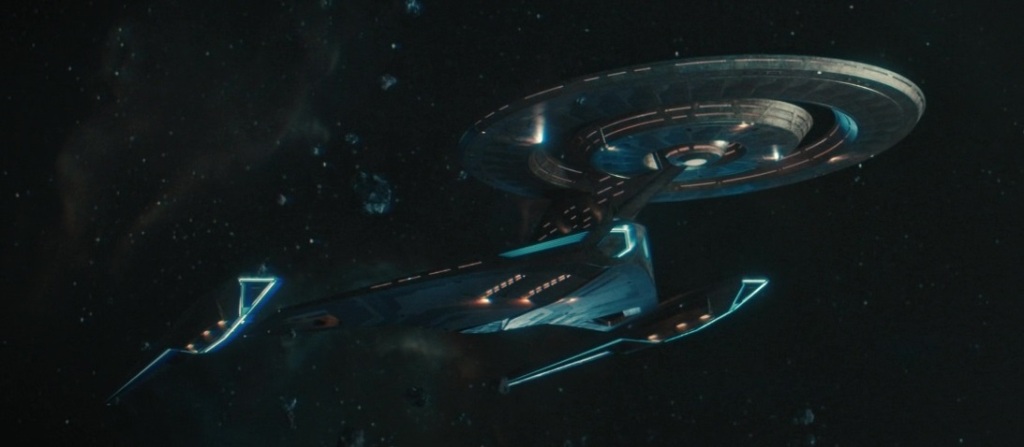
Those are all of the theories that are currently in play as we await Stormy Weather – the sixth episode of Season 4. We’re accumulating quite a few theories, some of which completely contradict one another! So far, Discovery’s fourth season has been an interesting journey. We’ve has some slower character moments, some semi-episodic stories (that may yet come back into play), and some interesting developments in regards to the DMA. As we near the halfway point of the season, there are still many different ways that the story could go.
Stormy Weather looks like it’ll bring back Grudge – I hope the cute little ball of fluff will be okay! A dark matter anomaly is no place for a puss!
Before we go, one final point. I write up these theories because I like Star Trek and I like writing. But for some folks, fan theories can hamper their enjoyment of a film or television show. It’s worth keeping in mind that most of these theories probably won’t pan out, and we have to be prepared for the fact that even the most well-constructed fan theory, no matter how fun and plausible it seems, simply won’t turn out to be true. If you find that speculating and reading theories is beginning to detract from your enjoyment of Star Trek: Discovery – or any other television show or film – it might be a good idea to take a break for a while.
Star Trek: Discovery Season 4 is available to stream now on Paramount+ in the United States, Scandinavia, Latin America, and Australia. The show is on Pluto TV in the UK, France, Germany, Italy, and other parts of Western Europe at 9pm on Fridays and Saturdays. Individual episodes or the full season can be purchased on iTunes, Amazon Video, and possibly other platforms in the UK, parts of Europe, and select other countries. The Star Trek franchise – including Discovery and all other properties mentioned above – is the copyright of ViacomCBS. This article contains the thoughts and opinions of one person only and is not intended to cause any offence.



